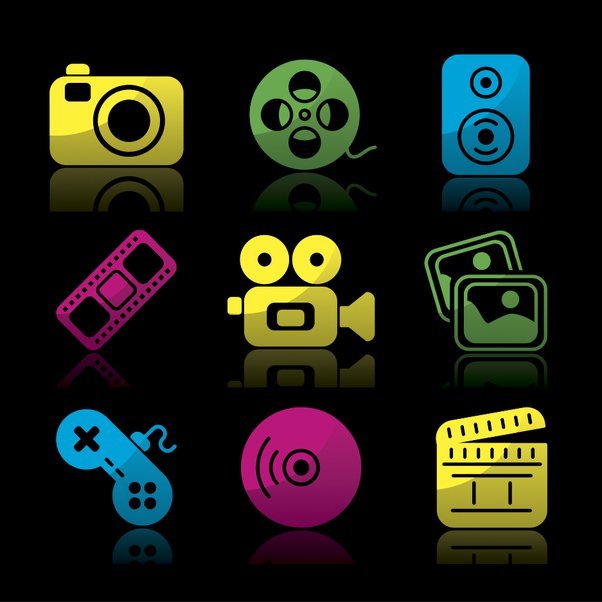The media and entertainment industry is a dynamic and multifaceted sector that plays a crucial role in shaping culture, informing the public, and providing a vast array of content for entertainment. From blockbuster movies and binge-worthy TV shows to chart-topping music and engaging digital content, this industry significantly influences our daily lives. Understanding how this industry functions provides insight into the intricate processes behind our favorite forms of entertainment and the economic powerhouse it represents.
Historical Background
The media and entertainment industry has a rich history, evolving from simple storytelling and live performances to the complex, technologically advanced ecosystem we see today. Early milestones include the invention of the printing press, the advent of cinema, the golden age of radio, and the rise of television. Each innovation not only transformed the way content was created and consumed but also expanded the industry’s reach and impact.
Industry Segments
Film and Cinema
Film and cinema remain central pillars of the media and entertainment industry. This segment involves the production, distribution, and exhibition of movies, ranging from independent films to major studio blockbusters.
Television Broadcasting
Television continues to be a dominant medium, with a vast array of channels offering news, entertainment, sports, and educational content. The advent of cable and satellite TV further diversified viewing options.
Music and Audio Entertainment
The music industry encompasses recording, production, distribution, and live performances. Digital platforms and streaming services have revolutionized how music is consumed, making it more accessible than ever.
Publishing (Books, Magazines, Newspapers)
Publishing includes the creation and distribution of books, magazines, newspapers, and digital content. Despite the challenges posed by digital media, traditional publishing remains a vital part of the industry.
Digital Media and Streaming
The digital revolution has given rise to streaming services, social media platforms, and online content creators. This segment has seen explosive growth, driven by the demand for on-demand, personalized content.
Key Players in the Industry
Major Film Studios
Major film studios such as Warner Bros., Universal Pictures, and Disney dominate the film industry, producing and distributing a significant portion of global cinematic content.
Television Networks
Television networks like NBC, CBS, and BBC play a pivotal role in content creation and distribution, shaping the viewing habits of millions worldwide.
Record Labels
Record labels such as Sony Music, Universal Music Group, and Warner Music Group are instrumental in discovering, producing, and promoting musical talent.
Publishing Houses
Renowned publishing houses like Penguin Random House, HarperCollins, and Simon & Schuster are leaders in the book and magazine publishing sector.
Streaming Giants
Streaming giants such as Netflix, Amazon Prime, and Spotify have disrupted traditional media, offering vast libraries of content accessible anytime, anywhere.
Production Process
Content Creation
The creative process begins with ideation and development, where concepts are turned into scripts, storyboards, and plans.
Pre-Production
Pre-production involves securing financing, casting, location scouting, and scheduling. It’s a critical phase that lays the groundwork for successful production.
Production
Production is where the actual filming, recording, or writing takes place. This phase requires coordination between directors, actors, crew, and other professionals.
Post-Production
Post-production includes editing, special effects, sound mixing, and finalizing the content for distribution. It’s where the raw footage or audio is polished into a finished product.
Distribution Channels
Traditional vs. Digital Distribution
Traditional distribution methods include cinemas, TV networks, and physical media like DVDs and CDs. Digital distribution, on the other hand, leverages the internet to stream content directly to consumers.
The Role of Theaters
Theaters remain crucial for film releases, providing a communal viewing experience and significant revenue through box office sales.
Broadcast and Cable Networks
Broadcast and cable networks distribute a wide range of content, from news and sports to dramas and sitcoms, reaching diverse audiences.
Online Streaming Platforms
Streaming platforms have transformed content consumption, offering convenience, variety, and personalized recommendations to viewers.
Revenue Streams
Box Office and Ticket Sales
Box office revenue is a major income source for films, while live events and concerts generate significant ticket sales for the music industry.
Advertising and Sponsorship
Advertising is a primary revenue stream for TV networks, websites, and social media platforms, while sponsorship deals enhance brand visibility.
Subscription Models
Subscription models are prevalent in streaming services, where users pay for access to a library of content without advertisements.
Licensing and Merchandising
Licensing agreements and merchandise sales provide additional revenue, especially for popular franchises and artists.
Technological Impact
Advances in Filming and Production Techniques
Technological innovations have enhanced filming and production quality, from high-definition cameras to sophisticated editing software.
Digital Revolution
The digital revolution has democratized content creation and distribution, enabling independent creators to reach global audiences.
The Role of Social Media
Social media platforms amplify content reach and engagement, allowing creators and companies to interact directly with their audiences.
Virtual and Augmented Reality
Virtual and augmented reality are emerging technologies offering immersive experiences, opening new frontiers for entertainment.
Regulatory Environment
Government Regulations
Government regulations ensure content adheres to legal and ethical standards, covering issues like copyright, censorship, and broadcasting rights.
Intellectual Property Rights
Intellectual property rights protect creators’ work, incentivizing innovation and creativity in the industry.
Censorship and Content Ratings
Censorship and content rating systems ensure media is appropriate for various audiences, balancing creative freedom with social responsibility.
Globalization of the Industry
International Markets
The media and entertainment industry has a global footprint, with content crossing borders and reaching diverse audiences.
Cross-Cultural Content
Cross-cultural collaborations and adaptations enrich the industry, bringing fresh perspectives and stories to the forefront.
Co-Productions and Global Collaborations
Co-productions between companies from different countries foster innovation and expand market reach.
Challenges Facing the Industry
Piracy and Copyright Infringement
Piracy and copyright infringement pose significant threats, undermining revenue and intellectual property rights.
Market Saturation
Market saturation requires companies to innovate continuously, standing out in a crowded and competitive landscape.
Changing Consumer Preferences
Adapting to changing consumer preferences is crucial, as audiences seek more personalized and interactive content.
Economic Impacts
Economic fluctuations impact production budgets, advertising spending, and consumer spending on entertainment.
Future Trends
Emergence of New Technologies
New technologies, from AI to blockchain, are set to revolutionize content creation, distribution, and consumption.
Shifts in Content Consumption
Content consumption is shifting towards mobile and on-demand platforms, driven by convenience and technological advancements.
Sustainable Practices in Production
Sustainability is gaining importance, with industry leaders adopting eco-friendly practices in production and operations.
Case Studies
Success Stories in Film and Television
Examining successful films and TV shows reveals insights into effective storytelling, marketing, and audience engagement.
Breakthroughs in Music
Innovations in music production and distribution highlight the industry’s adaptability and creativity.
Innovations in Digital Media
Digital media success stories showcase the power of the internet and social media in transforming content delivery and audience interaction.
Conclusion
The media and entertainment industry is a vibrant, ever-evolving sector that continues to shape culture and society. As technology advances and consumer preferences shift, the industry adapts, offering new and exciting ways to entertain and inform. Understanding its inner workings reveals the complexity and creativity that drive this dynamic field forward.


